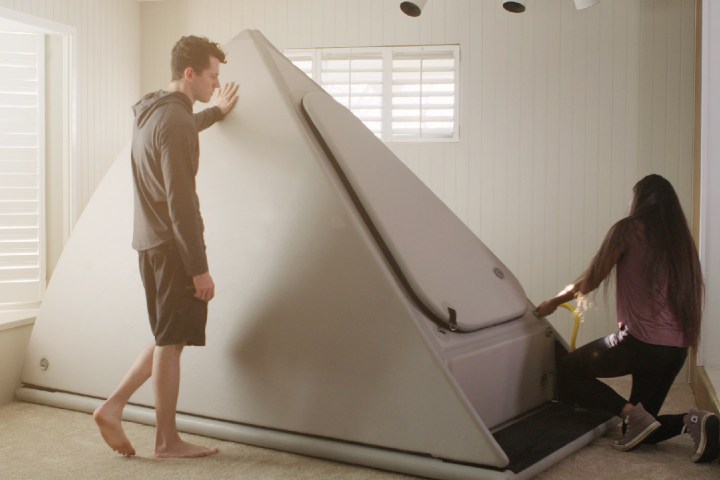Until now, if you wanted a sensory deprivation flotation tank in your home you’d better be a tech millionaire or international arms dealer, based on how much they cost. With prices that can easily reach into the tens of thousands of dollars, float tanks simply aren’t something within budget for the vast majority of folks. But a new Kickstarter campaign promises to change all that. Created by the Zen Float Company, it’s an inflatable sensory deprivation chamber which will set you back a more palatable amount of cash. After all, average Joes and Janes need zen relaxation, too!
“Floating, or sensory deprivation, involves lying in a tank or pod filled with about 10 inches of water and 1,000 pounds of Epsom salt,” creator Shane Stott told Digital Trends. “The salt renders you weightless so once you lie on your back you automatically float. While you are in there your skin is absorbing the magnesium and your mind is free of all sensory distractions, allowing yourself to just clear your mind and recharge. The water is heated to skin temp so it’s like you can’t even feel it.”
Unlike some of the pricier options on the market, the Zen Float Tank is fully inflatable (and deflatable) — which also helps if you’re living in a regular apartment, where space is at a premium. It’s made using drop-stitch inflatable technology, the same method used for blow up paddle boards and kayaks. Despite being made out of thousands of finely woven strands, once it’s fully inflated the exterior is rock solid. Setup can be completed in just 15 minutes, and while it requires a bit of weekly maintenance, the water and salt can last up to two years.

“I used to suffer from debilitating anxiety and panic attacks,” Stott explained. “It came to a head one night in Las Vegas, and the only thing I could think to do to escape the attack was to hop into the bath with the water up to my ears. Weeks later, I discovered floating and it was all over from there. Floating changed my life completely, and we have lots of similar stories from our customers. At the time, there were no float spas in Utah so I did some research and built a tank out of a fertilizer tank and aquarium parts.”
Since then, the Zen Float Company has gone from strength to strength — including a previous 2014 Kickstarter campaign that raised more than $300,000. As ever, we offer the usual warnings about the risks inherent in crowdfunding campaigns. However, if you understand these and still want to get involved, head over to the team’s Kickstarter page to pledge your cash. Prices start at $2,905, with shipping set for October 2018.


